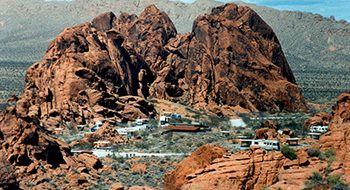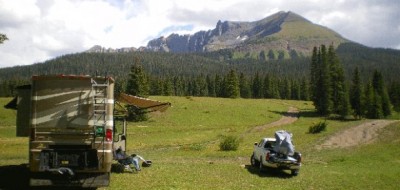 It takes energy to make energy, and 10% of all the energy consumed in the US—about 100 billion gallons of oil each year–is used just growing our food. Processing and transporting all those rutabagas, feedlot steaks, and artisan breads to our table raises the figure to 17%. The Chicago Produce Terminal reports that food in America travels about 1,500 miles before you stick your fork into it. And that figure is rising as grapes arrive from Chile and apples from China.
It takes energy to make energy, and 10% of all the energy consumed in the US—about 100 billion gallons of oil each year–is used just growing our food. Processing and transporting all those rutabagas, feedlot steaks, and artisan breads to our table raises the figure to 17%. The Chicago Produce Terminal reports that food in America travels about 1,500 miles before you stick your fork into it. And that figure is rising as grapes arrive from Chile and apples from China.
The United Nations says that the average American is responsible for about 22 tons of carbon dioxide emissions every year, compared to six tons per person throughout the rest of the world. You can trim some of this CO2 usage by eating as many fresh, whole, unprocessed foods as possible, and buying locally produced food from local area farmers and ranchers.
As RVers, we travel to many exciting places, and the preparation and enjoyment of local foods can become a highlight of our travels. The best local foods in season will be found at farmer’s markets, farm stands, and U-Pick farms. You may find your meals getting more interesting as you try foods you’ve never tasted before. Check local chambers of commerce or tourism bureaus for a list of markets and farmers and ranchers that sell directly to the public, or go online and do a Google search for “farmers market” with your location.
Ask the supermarket produce manager which of their fruits and vegetables come from local growers and buy those. Supermarket buyers have responded to the demand for local foods. You will be pleasantly surprised at the taste of right-off-the-farm fresh fruits and vegetables. And the bonus is that a local diet of fresh produce and meals made in your RV, eliminating a lot of processed foods containing fats, additives, and sugar, will do wonders for your waistline.
But also, if you believe in frugality, and like to stretch your travel budget, buying your food as direct to the producer as possible can make a huge difference in how many $$ you have left over at the end of the month–and can do something exciting or charitable with them. You will find also that these local, fresh-picked foods, taste better with the least amount of preparation, saving you cooking time and tasting awesome.
Eat local. Eat fresh. Eat healthy. Not only will you be helping to reduce carbon dioxide emissions, but also your taste buds will thank you for it–but your wallet, unlike your waistline, will be a little fatter. And that’s good too.
For more RVing articles and tips take a look at my Healthy RV Lifestyle website, where you will also find my ebooks: BOONDOCKING: Finding the Perfect Campsite on America’s Public Lands (PDF or Kindle), 111 Ways to Get the Biggest Bang for your RV Lifestyle Buck (PDF or Kindle), and Snowbird Guide to Boondocking in the Southwestern Deserts (PDF or Kindle), and my newest, The RV Lifestyle: Reflections of Life on the Road (Kindle reader version). NOTE: Use the Kindle version to read on iPad and iPhone or any device that has the free Kindle reader app.

